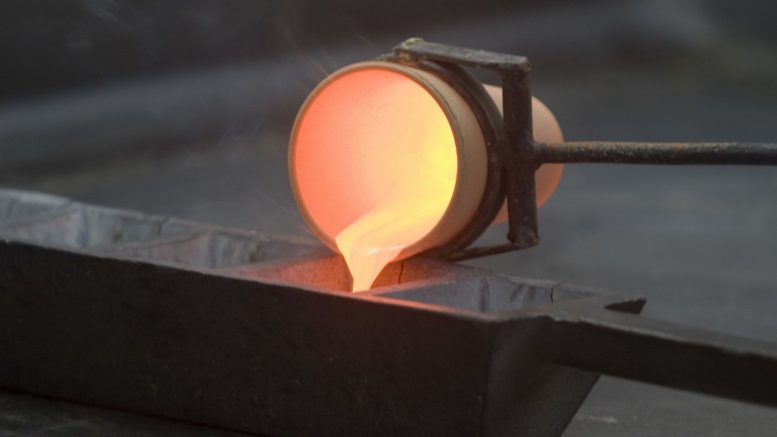Glencore (LSE: GLEN) posted a US$2.6 billion loss after write-downs for the first half of the year and scrapped its dividend, as the coronavirus pandemic dented global demand and lowered prices and production at its mining division.
Despite the virus impact, the Swiss commodities trader and miner managed to remain profitable on an operating basis. Glencore posted US$1.5 billion in adjusted earnings before interest and taxes, but booked US$3.2 million in impairment charges.
The company said it was putting balance sheet strength ahead of shareholder returns, as net debt climbed 12% to US$19.7 billion at the end of June.
The increase in borrowings came as Glencore tapped its credit lines to take advantage of falling oil prices in March and April — it bought cheap crude and sold it in the futures market for a profit. As a result, its marketing business performed especially well, with full year earnings expected to come in at the top end of its US$2.2-$3.2 billion range, after hitting US$2 billion in the first half.
CEO Ivan Glasenberg said the board had concluded it would be “inappropriate to make a distribution to shareholders in 2020.” Instead, the firm will focus on debt reduction after pouring money into the oil trading business to cash in on volatile price swings.
Christopher LaFemina, an analyst at Jefferies, said the decision to cancel the dividend was disappointing in light of the strong performance from the company’s trading arm. “We believe Glencore has missed an opportunity to send a strong message to the market about its dividend policy being robust through the cycle,” he said in a research note.
BMO Capital Markets’ analyst Edward Sterck said the bank expected the trading division’s oil position profit to be booked largely in the second half of the year. “It has clearly unwound some of the positions in H1 whilst still (looking at net debt combined with disclosures) retaining significant exposure,” he wrote in a note to investors.
The mining and metals expert added the move could lead to a beat in expectations for the second half of the year, but noted the market was “not given enough disclosure” to forecast with confidence.
Glasenberg, who has led Glencore since 2002, said Covid-19 had not changed the timing of the company’s succession plans, but declined to give further details.
The executive, who is the company’s second-biggest shareholder with a 9% stake, according to Refinitiv Eikon data, said in 2018 that he would step down in three to five years. At the time, he said the company had begun training a small group of front runners to take over the post.
“As we said before Covid…once the old guard is changed then I will move on,” Glasenberg said on Aug. 6, adding that the head of coal trading, Tor Peterson, was still due to leave. Long-time Glencore executive Daniel Mate, who led its zinc business, left last month.
Glencore has been transitioning to a new generation of management over the past couple of years, appointing new division heads to cover marketing and assets for coal, ferroalloys, copper and oil.
The Swiss commodities giant mined 588,100 tonnes of copper in the first half of the year, 11% less than during the same period of 2019.
The company said global mine supply would likely keep hurting because of Covid-19 and new projects will experience delays. Aging equipment and declining ore grades are also likely to crimp global supply, Glencore said.
A rebound in demand, led by Chinese factories, would likely continue, “supported by significant economic stimulus measures being undertaken globally,” it said.
Glencore noted that the two key areas of cobalt demand, lithium-ion batteries for mobile phones and electric vehicles (EVs), looked “promising”.
“The growing momentum evident across the [EV] sector, together with a recovery in mobile-phone demand, points to higher future cobalt demand,” Glencore said.
On zinc, the company said it was still too early to tell what the metal’s supply balance would look like this year, with the scale of the pandemic’s effect on supply and demand still unknown.
This article first appeared in our sister publication, Mining.com.


Be the first to comment on "Glencore records US$2.6B loss, scraps dividend"